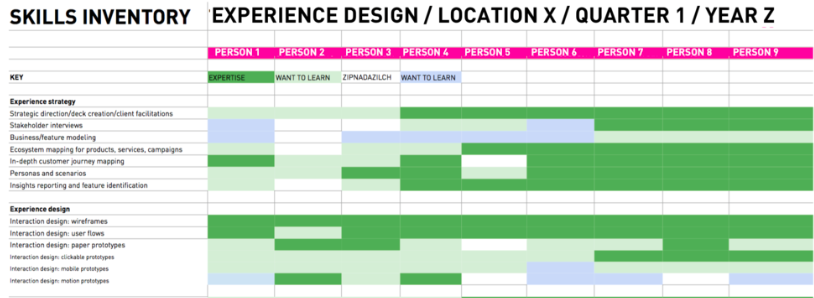To better utilize the strength of your team, try adapting the skills board Noel Franus created during his time at ad agency CP+B.
- List skills that are relevant to your organization. Determine the areas of work in your company and list the specific skills associated with each. In Franus’s inventory, the focus was on experience design, but this could be anything from accounting to customer service.
- Identify strengths, weaknesses, and opportunities for growth. Have each team member identify which skills they consider themselves experts in, which skills they know nothing about, and which skills they are interested in learning. This process helps reveal previously “hidden” experts you can begin to utilize, knowledge gaps that need to be addressed, and areas where each employee can benefit from training or more experience.
- Share the skills board. Share the skills board with the larger team by posting it on the wall in a high-traffic area, or send it in an email. This promotes collaboration by directing leaders to the right people when expertise is needed.
Takeaway: Tracking your teams’ abilities makes allocating work more efficient, but it also benefits employees by highlighting a previously hidden talent. In addition, it serves as a career development tool by identifying what skills they want to learn next—which ultimately helps improve retention. Lastly, a skills inventory can serve as an early warning system by identifying gaps in knowledge that the organization can fill with new hires or additional training.








The Evolutionary Edge
Every Link Ever from Our Newsletter
Why Self-Organizing is So Hard
Welcome to the Era of the Empowered Employee
The Power of “What If?” and “Why Not?”
An Adaptive Approach to the Strategic Planning Process
Why Culture/Market Fit Is More Important than Product/Market Fit
Group Decision Making Model: How to Make Better Decisions as a Team